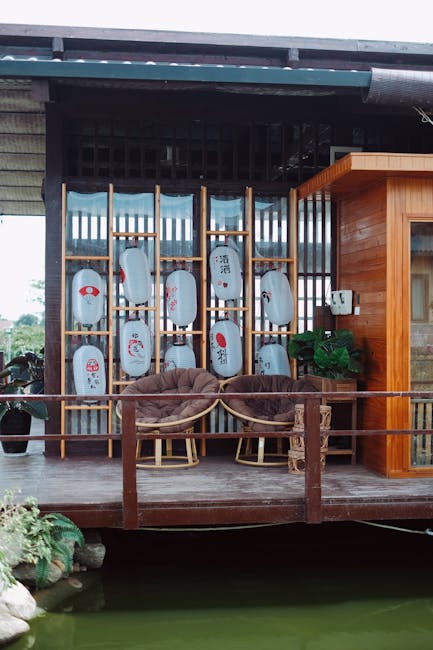Outdoor Living Design Mistakes to Avoid for a Harmonious Backyard Retreat
Introduction
Creating an outdoor living space should be a joyful experience, resulting in a harmonious backyard retreat where you can relax and entertain. However, many homeowners fall into common design traps that can detract from the overall enjoyment and value of their outdoor spaces. This article outlines crucial outdoor living design mistakes to avoid, helping you create a functional, aesthetically pleasing, and truly relaxing haven.
Main Sections
Ignoring Site Considerations
One of the biggest blunders is failing to consider the specific characteristics of your property. This includes sunlight, wind, soil, and existing landscaping.
- Sun Exposure: Planting sun-loving plants in a shady area, or vice versa, is a recipe for disaster. Analyze sunlight patterns throughout the day before making planting decisions.
- Wind Patterns: Strong winds can make an outdoor space uncomfortable. Consider installing windbreaks like fences, hedges, or strategically placed trees.
- Soil Type: Different plants require different soil conditions. Test your soil and amend it as needed to ensure your plants thrive.
- Drainage: Poor drainage can lead to soggy areas and mosquito breeding grounds. Ensure proper drainage by grading the land or installing drainage systems.
- Existing Landscaping: Don’t disregard existing mature trees and shrubs. Incorporate them into your design for a more established and natural look.
Neglecting Functionality and Flow
A beautiful outdoor space is useless if it doesn’t function well for your needs. Think about how you plan to use the space and design accordingly.
- Poor Traffic Flow: Ensure easy movement between different areas of your outdoor space. Avoid narrow pathways or obstacles that impede circulation.
- Insufficient Seating: Provide enough seating for your typical gathering size. Consider a mix of seating options, such as lounge chairs, dining chairs, and benches.
- Lack of Storage: Outdoor furniture cushions, gardening tools, and grilling accessories need a place to be stored. Incorporate storage solutions like deck boxes, sheds, or built-in benches with storage compartments.
- Inadequate Lighting: Lighting is essential for evening enjoyment. Use a combination of ambient, task, and accent lighting to create a warm and inviting atmosphere.
Choosing the Wrong Materials
Selecting durable and weather-resistant materials is crucial for the longevity of your outdoor space.
- Using Non-Weatherproof Furniture: Opt for furniture specifically designed for outdoor use. Look for materials like teak, aluminum, wrought iron, or synthetic wicker.
- Choosing the Wrong Decking Material: Consider the pros and cons of different decking materials, such as wood, composite, or PVC, based on your budget and maintenance preferences.
- Selecting Inappropriate Stone or Pavers: Choose stone or pavers that are slip-resistant and suitable for outdoor use. Ensure they are properly installed to prevent cracking and shifting.
- Ignoring the Climate: Consider your local climate when choosing materials. For example, in humid climates, opt for materials that resist mold and mildew.
Ignoring Privacy and Noise Control
Creating a sense of privacy and minimizing noise are essential for a relaxing outdoor retreat.
- Lack of Screening: Install fences, hedges, or trellises to create privacy from neighbors or street traffic.
- Poor Sound Absorption: Hard surfaces like concrete and pavers can amplify noise. Incorporate soft elements like rugs, cushions, and plants to absorb sound.
- Ignoring Neighborly Etiquette: Be mindful of your neighbors when using your outdoor space. Keep noise levels reasonable and avoid activities that could be disruptive.
Skimping on Professional Help
While DIY projects can be rewarding, some aspects of outdoor living design are best left to the professionals.
- Electrical Work: Hire a licensed electrician to install outdoor lighting and electrical outlets.
- Plumbing: Engage a qualified plumber for outdoor kitchens, water features, or irrigation systems.
- Structural Work: Consult with a structural engineer or contractor for decks, patios, or retaining walls.
Conclusion
By avoiding these common outdoor living design mistakes, you can create a harmonious backyard retreat that you’ll enjoy for years to come. Careful planning, attention to detail, and a willingness to invest in quality materials and professional help will pay off in the long run, resulting in a functional, beautiful, and relaxing outdoor space.














Post Comment